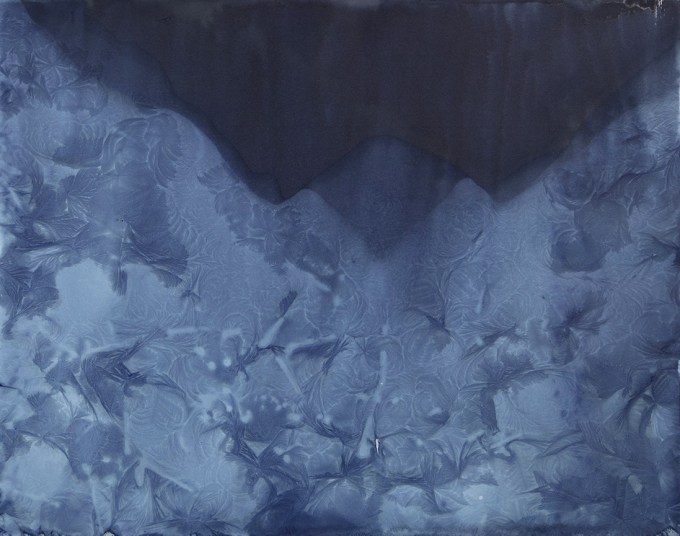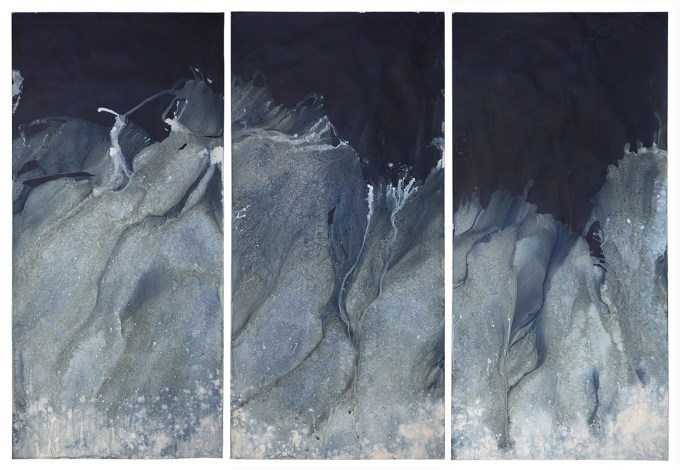
In the first and most dazzling of these kaleidoscopic sentences, she builds upon her previous shimmering reflections on the color blue and writes in one centuries-long exhale:




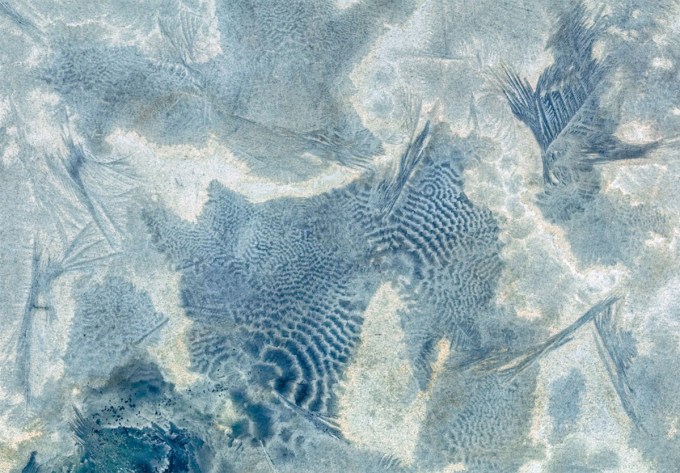


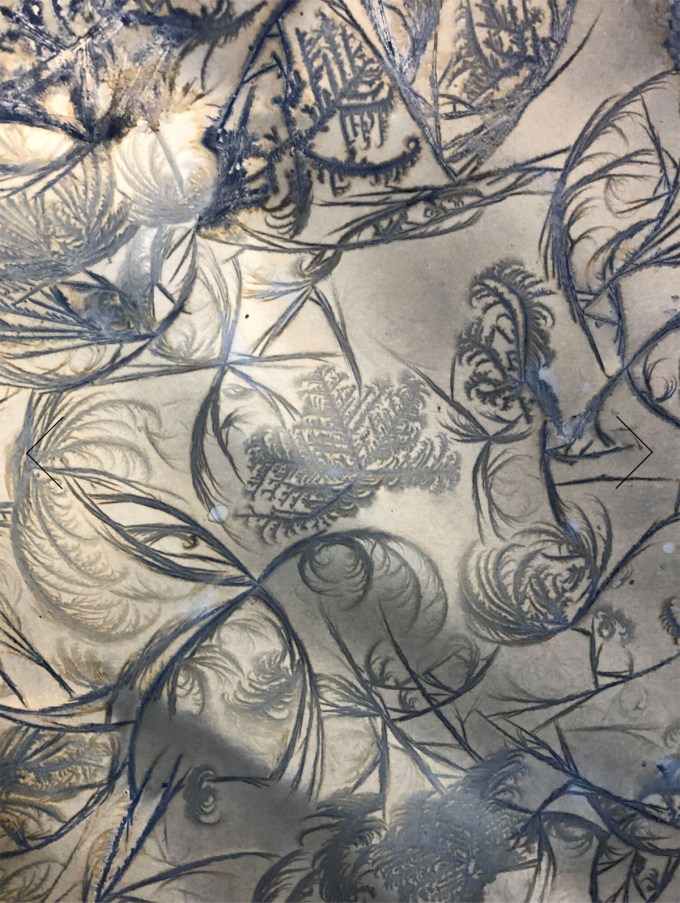

Long ago, while visiting the photographic glass plates of nebulae and constellations at the Harvard College Observatory archives, I was overcome by the palpitations of paradox — how we think that photography immortalizes, while its very roots are in doing the opposite: making of the ephemeral an illusion of the eternal, razing us on the edge of our own transience as we gasp at the beauty of long-dead flowers and peer at the light of long-dead stars.




Artist Meghann Riepenhoff both celebrates and subverts this paradox of temporality in her stunning cyanotype prints of ice formation, for which she spent four years wading into freezing waters all over this pale blue dot — from Walden Pond to the Seine to the mountain creeks of Western Washington’s old-growth forests — to capture one of the most surreal facets of reality: the haunting alchemy of phase transition.





At the heart of it all is a layered meditation on time and transformation, on the subtle dance between fluidity and solidity that may be the highest art of life, on how something, in becoming other, can become more fully itself.
Stray dogs whose fur had turned vivid blue were recently photographed wandering in the snow near a Russian town, the cause of their color thought to be a chemical from an abandoned factory, one apparently similar to the coal gas byproduct dumped around Britain for several decades that was a sticky bright blue substance known as Blue Billy of which a report noted “acute toxic effects of Blue Billy include loss of consciousness and breathing difficulties, as it can limit the absorption of oxygen at the cellular level,” and with this naming the substance seemed to take on the characteristics of an individual, an unpredictable one who changed roles as he changed associates, as he often did, since the same underlying substance, cyanide, compounded with sodium, was used to leach microscopic gold out of vast quantities of pulverized earth in eastern Nevada and once the poisonous liquid had pulled out the gold, there were lakes of it that the mining corporations were supposed to keep the birds from landing on, but since they self-monitored, how many birds died from landing in manmade lakes of poison is unknown, and hydrogen cyanide which in its pure form is a liquid that boils at 78 degrees Fahrenheit was the poison in poison pills that various Nazis used to kill themselves, and in Zyklon B, the pesticide used to kill more than a million human beings in Auschwitz (Zyklon being German for cyclone, B short for Blausäure, or blue acid, what we call Prussic acid in English), and so go a few of the many deadly things this cyanide does, but the substance is not only a poison, not only a destroyer, because it is part of the first synthetic color known as Prussian blue that the Encyclopedia Brittanica notes “was first synthesized about 1704 by the reaction of salts of iron in the +2 oxidation state (ferrous salts) with potassium ferrocyanide,” and the same Prussian blue can be given to human beings as a “pill that can help remove radioactive cesium and thallium from people’s bodies,” says a government site that also warns that breaking open the pills before swallowing will turn teeth and mouths blue: cyanide’s name comes from cyan, that Greek word for blue that I somehow connect to both cynicism and cygnets (the term for baby swans), the blue of stray dogs, of lakes, of poisons and cures for worse poisons, the blue of distance, the blue and blue laws, of blue mouths and dangerous blue mud, of the cyanotype photograms of seaweed specimens by Anna Atkins that she compiled into what is often described as the first photographic book, and the blue of the photographs in this book.


The book companion to the project, titled Ice, is itself a work of wonder and uncommon beauty, housed in an all-white slipcase embossed with the silent silhouette of ice formation, dedicated “to the water, which makes up all the beings and places that made this book possible,” and crowned with prose by the inimitable Rebecca Solnit, whose “Seven Sentences on the Fluid and the Frozen” punctuate the otherworldly blues.


Complement with the great Scottish mountaineer and poet Nan Shepherd on water as a portal to transcendence and this stunning Japanese illustrated poem celebrating water, then revisit two centuries of great writers — from Goethe and Thoreau to Toni Morrison and Rebecca Solnit — reverencing the color blue.


In this singular collaboration between human and landscape, she dragged blanket-sized sheets of photographic paper coated with potassium ferricyanide and ferric ammonium citrate — compounds sensitive to the blue portion of the spectrum spilling into ultraviolet, developed and fixed by only water and sunlight — to emerge with otherworldly images of crisp crystal lattices and feathery fractals: fluid becoming solid becoming wonder.



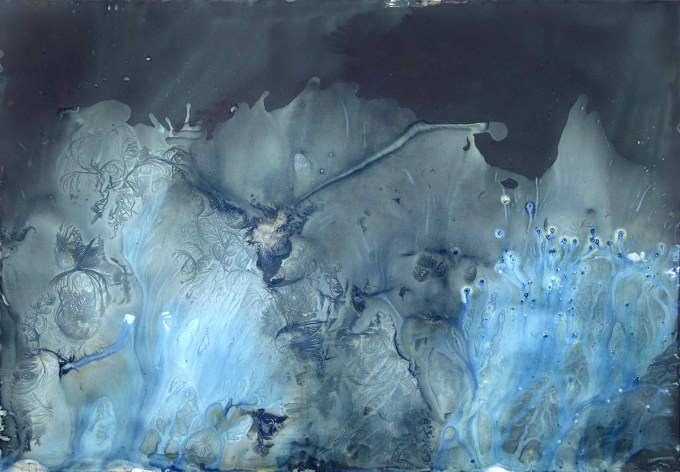
Radiating from her prints is a kind of magical realism — you peer at these freezing waters, this hallmark of our blue world, and see the atmospheres of other planets, the plumage of a bird from some undiscovered paradise, the hieroglyphics of some ancient civilization encoding elemental wisdom we have long forgotten.

